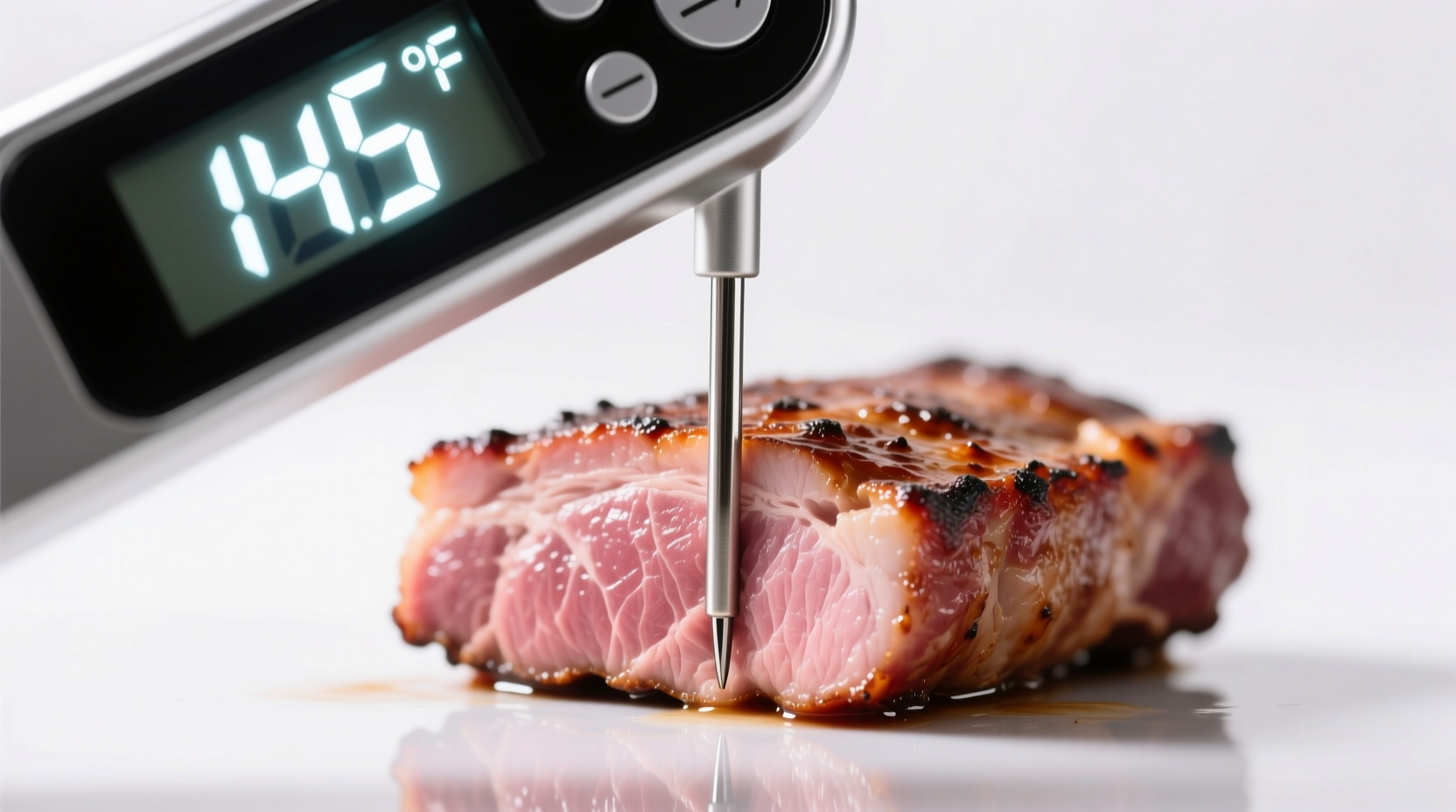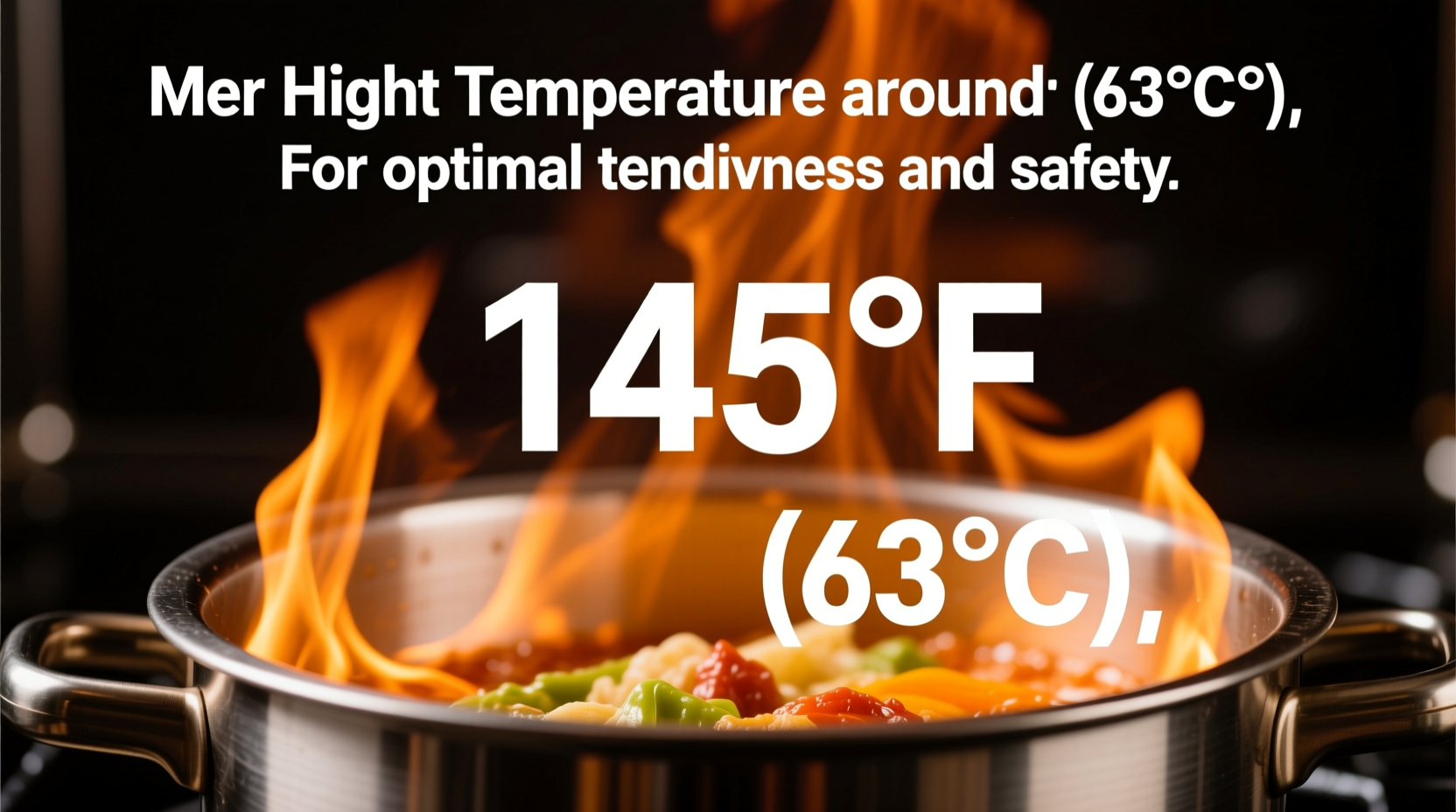Pork tenderloin should be cooked to an internal temperature of 145°F (63°C), followed by a mandatory 3-minute rest period. This precise temperature ensures food safety while maintaining the meat's tenderness and juiciness—undercooked pork risks foodborne illness, while overcooking leads to dry, tough results.
Getting pork tenderloin temperature right isn't just about following a number—it's the perfect balance between food safety science and culinary artistry. As a professional chef with years of experience teaching home cooks proper meat preparation techniques, I've seen how this single measurement transforms ordinary dinners into restaurant-quality meals. Let's explore exactly why 145°F makes all the difference and how to achieve perfect results every time.
The Evolution of Pork Cooking Guidelines
Understanding why 145°F became the standard requires examining how food safety recommendations have evolved. For decades, the USDA recommended cooking pork to 160°F—a guideline established when trichinosis (a parasitic infection) posed significant risks from undercooked pork. Modern farming practices have virtually eliminated this threat, allowing for lower, more optimal temperatures.
| Year | Recommended Temperature | Scientific Basis |
|---|---|---|
| Pre-2011 | 160°F (71°C) | Conservative approach to eliminate trichinella parasites |
| 2011 | 145°F (63°C) + 3 min rest | Research confirmed pathogens eliminated at lower temperatures with rest period |
| Present | 145°F (63°C) + 3 min rest | Validated by extensive food safety studies and industry adoption |
This shift reflects improved food safety standards in pork production and better scientific understanding of pathogen elimination temperatures. The USDA's current guidelines, established in 2011 and reaffirmed through ongoing research, recognize that trichinella parasites are destroyed at 137°F, with 145°F providing a significant safety margin while preserving quality.
Why Temperature Precision Matters for Pork Tenderloin
Pork tenderloin's delicate structure makes temperature control particularly crucial. Unlike fattier cuts, this lean muscle has minimal connective tissue and fat marbling, meaning:
- Below 140°F: Risk of foodborne pathogens remains, with potentially unsafe conditions
- 140-145°F: Perfect medium-rare zone—slightly pink center with maximum juiciness
- 145-150°F: Medium doneness—acceptable pinkness with slightly firmer texture
- Above 150°F: Rapid moisture loss begins, leading to dry, stringy results
The 3-minute rest period after reaching 145°F serves two critical functions: it allows residual heat to eliminate any remaining pathogens while enabling juices to redistribute throughout the meat. Skipping this step often results in disappointing, dry pork despite hitting the target temperature.
Practical Temperature Measurement Guide
Accurate temperature measurement separates successful pork preparation from disappointing results. Follow these professional techniques:
- Select the right thermometer: Use an instant-read digital thermometer (tested to ±0.5°F accuracy) rather than dial thermometers
- Position correctly: Insert into the thickest part of the tenderloin, avoiding bone or fat pockets
- Check multiple spots: Verify temperature in 2-3 locations as heat distribution varies
- Monitor final rise: Remove from heat at 140°F to account for 5°F carryover cooking
- Verify after resting: Confirm temperature hasn't dropped below 140°F during rest period

Temperature Preferences Across Cooking Methods
While 145°F remains the food safety standard, slight adjustments may enhance results depending on your cooking technique:
- Grilling: Remove at 140°F (carryover cooking typically adds 5-7°F)
- Oven roasting: Remove at 142°F (more gradual temperature rise)
- Sous vide: Cook at precisely 140°F for 1-2 hours, then sear
- Smoking: Target 145°F but monitor closely as low-and-slow methods vary
Professional chefs sometimes recommend 140°F for premium quality pork from trusted sources, but 145°F remains the universally recommended safe temperature for home cooks. The National Pork Board confirms this standard across all preparation methods.
Avoiding Common Temperature Mistakes
Even with the correct target temperature, these frequent errors sabotage perfect pork tenderloin:
- Guessing doneness: Visual cues alone are unreliable—always use a thermometer
- Insufficient resting: Cutting too soon releases precious juices onto the cutting board
- Incorrect thermometer placement: Measuring near bone or fat gives false readings
- Overlooking carryover cooking: Removing at 145°F guarantees overcooking
- Using uncalibrated tools: Test thermometers monthly in ice water (should read 32°F)
When preparing pork tenderloin for special diets or vulnerable populations (pregnant individuals, elderly, immunocompromised), some food safety experts recommend cooking to 150°F for additional margin of safety, though this may slightly reduce tenderness.











 浙公网安备
33010002000092号
浙公网安备
33010002000092号 浙B2-20120091-4
浙B2-20120091-4